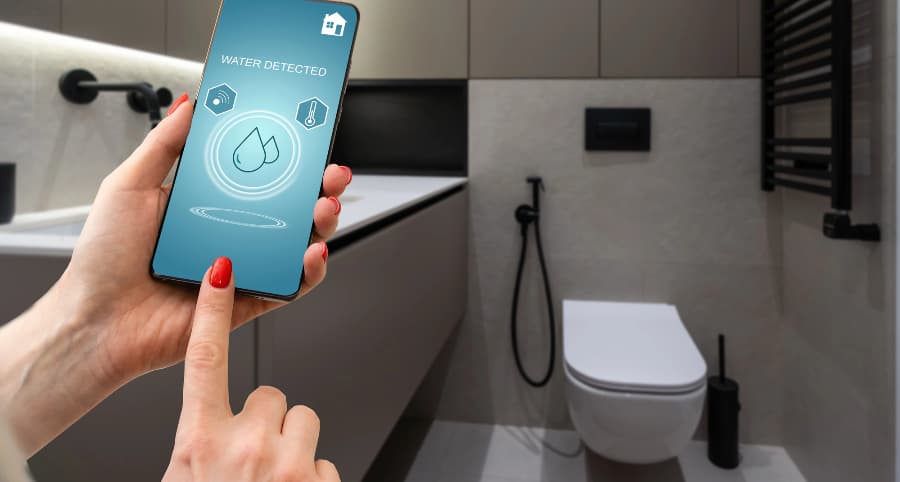How does a water sensor work and why connect one to your Davenport smart home?

One minor leak at your house can result in big issues and thousands in damage. You have to protect against this threat; fortunately, there’s a simple way to do so. A water sensor is an effective, simple, and economical solution. Explore how they work and why you ought to integrate water sensors into your Davenport smart home.
How water sensors shield Davenport your home
Water enters homes in numerous ways, whether from a weather-related incident, plumbing issue, appliance breakdown, or human error. Whatever way it takes place, you have to know right away, and this is why water sensors are important. But how exactly do they work?
Many water sensors are conductive and function with corresponding electrodes. When water infiltrates the space between the electrodes, an electrical circuit is established, activating your alarm. You’ll also come across capacitive sensors that give off an electrical field. Your alarm activates when water contacts the conductive surfaces of these sensors and interrupts the field. Optical sensors using infrared LED light are an additional possibility.
Get more protection from water sensors
A few innovative water sensors provide even more protection as they feature incorporated temperature sensors. This is a smart way to prevent frozen pipes. If there’s a drastic reduction in temperature, you’ll know right away. Taking steps before pipes break will protect you from flooding and expensive repairs.
Why integrate water sensors into your Davenport smart home?
When water issues occur, you must be warned immediately. You can attain this aim by incorporating water sensors into your smart home. Whether you’re there to hear the alarm or not, you’ll get an immediate notification on your mobile device. As an added benefit, your 24-hour monitoring specialists will be alerted. Each moment counts in a water emergency to limit the damage and disruption to your household.
Where should you put water sensors?
Any location at risk of water infiltration is an appropriate place for water sensors. Place them in these spots:
- Bathrooms: Place close to tubs or behind toilets.
- Basements: Water commonly infiltrates lower levels via damaged walls or because of excessive rain or faulty sump pumps.
- Near water heaters or appliances: Any water-using appliance might over time leak.
- Under sinks: Water sensors are great for identifying leaky pipes in locations you can’t see.
- Attics: Detect roof leaks early and prevent costly repairs.
Install water sensors with your Vivint smart home
Give your residence the robust protection it deserves with Vivint’s innovative components. Our water sensors in Davenport integrate with your Vivint smartphone app to deliver instant updates any time your alarm is triggered. You also benefit from built-in temperature sensors to avert pipe freezing. Discover all the smart home devices available in Davenport by dialing (563) 674-6116 today.
